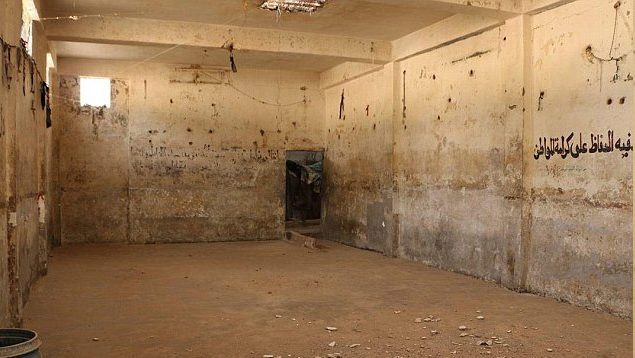أهالي المعتقلين ماتوا عشرات المرّات، وهم يعيشون قلق الانتظار والخوف، ويتمسّكون بالأمل، على الرغم من حبائله المتقطعة
21 / تموز / يوليو / 2018

غازي دحمان – العربي الجديد
عشرات، إن لم يكن مئات، العائلات، تفاجئها يوميا أنباء مقتل أبنائها في سجون نظام الأسد، إما بتبليغ الأسر مباشرة من أجهزة المخابرات، أو يكتشف الأهل الأمر عند استخراج أوراق من دوائر السجل المدني، أو حتى يبلغهم أحد من الدوائر ذات العلاقة بالأمر.
طوفان من أسماء الشهداء الذين يموتون تحت التعذيب تغرق فيه سورية. وبصمت، وبعيداً عن أعين الإعلام يتم تهريب مذبحة لعشرات آلاف المعتقلين على مدى سنوات الثورة. تفيد تقديرات بأن عدد السجناء الذين انقطعت أخبارهم يتجاوز مائتي ألف معتقل، عدا عن عدد مثلهم لم يعترف نظام الأسد باعتقالهم، على الرغم من دلائل كثيرة على قيامه بذلك.
تنسب تقارير الوفاة التي تستخرجها أجهزة مخابرات نظام الأسد موت المعتقلين إلى أزمة قلبية، من دون خشية من انكشاف هذه الذريعة المتهافتة، والسبب أن الأزمة القلبية واحدةٌ من أسباب الموت التي لا تثير أسئلةً كثيرة لدى المتلقي، ما دامت الأجهزة لا تستطيع الادعاء بأن عشرات آلاف السجناء انتحروا في السجون، نتيجة إحساسهم بالذنب، وما دام النظام لا يستطيع ذكر الأسباب الحقيقية للوفاة، التعذيب الشديد، أو القتل المتعمد.
لكن من هؤلاء الذين تصر أجهزة الأسد على إرسالهم إلى الموت من دون رحمة؟ وكيف لنظام يقول إنه انتصر ويقتل شبابا؟ ثم ماذا عن الحل السياسي الذي زعم رأس النظام أنه صار ممكناً الآن؟ من يفتش في هوية هؤلاء يجد أنهم، في الغالب، من عناصر الثورة المدنية، طلاب.
“ليس بشار الأسد فارساً نبيلاً فيعفو عن خصومه حينما يكون في موقع القوّة” ثانويات وجامعات، كتّاب ومصورون ونشطاء وكوادر متعلمة، أصحاب أفكار ليبرالية ويسارية، وحتى لا منتمون سياسياً، بقدر ما لديهم ثقافة تحرّرية، ونشطون اجتماعياً وثقافياً، ولديهم القدرة على التعبير عن أنفسهم وعن الحراك الثوري ووصف جرائم النظام. ظهر هؤلاء يوم قامت الثورة، بعد أن كانت قدراتهم وطاقاتهم حبيسة خيالاتهم وصدورهم، وشكلت الثورة المنصّة الكبرى لعرض قدراتهم.
في حسابات نظام الأسد، هؤلاء هم عدّة الثورة وأدواتها الأساسية، وبتحطيم هذه العدّة لن تكون هناك ثورة لسنوات طويلة مقبلة، فهم محرّكات الثورة، ومن يبلورون محفّزاتها، وهم من يكشفون للمجتمع دروب الخلاص من الاستعباد والفساد. وبحسابات هذا النظام، لا يمكن التصالح مع هؤلاء، كما يفعل مع المسلحين، ولا يمكن المغامرة بإطلاق سراحهم، وإعادتهم إلى بيئاتهم، لأن الثورة إذا نامت، فهؤلاء قادرون على إيقاظها.
ليس قتل الناشطين في سجون الأسد حدثاً مقطوع الصلة عن كل الإجراءات التي قامت بها أجهزة النظام لقتل الثورة، فلم تكن قد مضت على انطلاق الثورة أشهر قليلة، حتى أصدر نظام الأسد قائمةً بمليون مطلوب للأجهزة المخابراتية، حينها لم يكن السلاح قد ظهر، ولم يعرفه أي من الناشطين والمتظاهرين، وبما أن هؤلاء المليون كانوا يعرفون مصائرهم، لو تم القبض عليهم، فإنهم قرّروا مرغمين التخفّي أو الهرب خارج البلد، وتكشّف لاحقاً أن نظام الأسد تعمّد تسريب لوائح المطلوبين، ليتخلص من عدّة الثورة.
أيضاً، يدخل أمر قتل السجناء ضمن مخطط القضاء، بالكامل، على الجيل الذي مسّته الثورة، سواء الذين انخرطوا مباشرة بفعالياتها، أو الذين لم يثبت أنهم شاركوا من قريب أو بعيد في الثورة. وقد يرى القارئ أن هذا الطرح مبالغٌ فيه، غير أن جنون نظام الأسد وغباءه دفعاه إلى التفكير على هذه الشاكلة، بل والعمل على تطبيق هذا التفكير عملياً، بدليل وضعه كل شخص يبلغ عمره بين العقدين، الثاني والرابع، على لوائح المطلوبين، إن لم يكن لزجّهم على جبهات المعارك، لإدخالهم إلى السجون بذريعة الاشتباه.
تكشف مجريات تطورات الأوضاع في سورية أن نظام الأسد سيواصل الحرب على السوريين إلى أمد طويل، وحتى لو سكتت الجبهات، وصمتت المدافع، وزالت المخاطر، فإن ماكينة القتل.
“نظام الأسد سيواصل الحرب على السوريين إلى أمد طويل” لن تتوقف، والسبب أن تقييم نظام الأسد هذه الأوضاع يقوم على اعتبار أن لديه فرصة يتوجب استثمارها إلى أبعد الحدود، فعين العالم غائبة، والستارة أسدلت على الحدث السوري، والمجتمع السوري ضعيف وممزق إلى أبعد الحدود، والفرصة مواتية لممارسة التنكيل بأبشع صوره.
من بين أصعب المآسي التي واجهها السوريون مأساة قتل السجناء، ذلك أن أهالي المعتقلين ماتوا عشرات المرّات، وهم يعيشون قلق الانتظار والخوف، ويتمسّكون بالأمل، على الرغم من حبائله المتقطعة، ليأتيهم خبر موت أبنائهم، في نهاية المطاف، مثل ضربة صاعقة، وكأن عصابة الأسد تقول لهؤلاء، موتوا جماعياً بالأزمات القلبية، قتلنا أبناءكم خنقاً وسحلاً وتقطيعاً، أشبعنا غليلنا بموتهم، والآن ننتقم منكم لمسؤوليتكم عن تنشئة هؤلاء العاقين.
ليس بشار الأسد فارساً نبيلاً كي يعفو عن خصومه، حينما يكون في موقع القوّة، ولا هو بالرجل الذي عرك السياسة ووصل إلى المنصب بجهوده. ويذكر من عرفوه أنه حين تم استدعاؤه من لندن، بعد موت شقيقه باسل، الوريث الأساسي لسلطة حافظ الأسد، جرى تكليف قادة أجهزة المخابرات بتعليمه ألف باء الحكم، وهؤلاء يعتبرون جميع السوريين خونةً ومتآمرين، ما داموا أحياء يتنفّسون، وهم ليسوا سوى عبء فوق ظهورهم، والسياسة الممكن التعامل معهم بها هي إخضاعهم بالسوط إلى أن يأتي أجلهم، وأفضلهم من يرحل باكراً ويريح.

 Eng
Eng